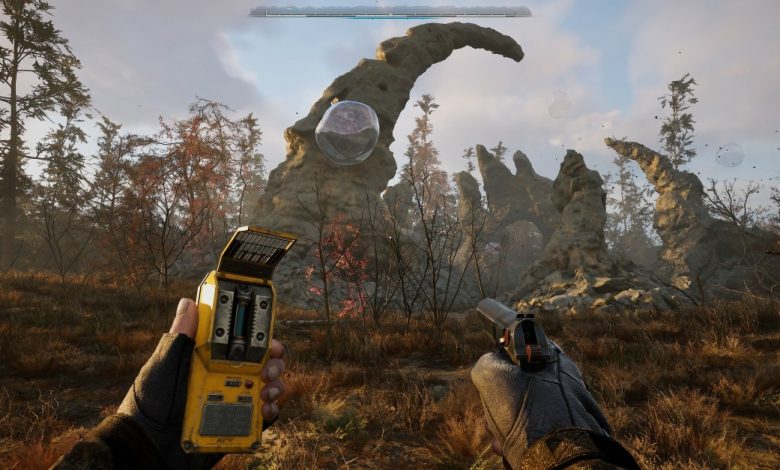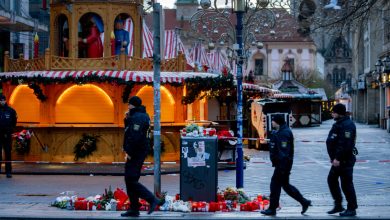Three months later, S.T.A.L.K.E.R. 2 is the glorious pain in the ass its makers intended

When S.T.A.L.K.E.R. 2: Heart of Chornobyl was released in November, it was clearly not yet the game its developers, GSC Game World, wanted it to be. Sure, this imagining of the Zone was fabulously moody, a desolate and bleak expanse of bog, scrubland, abandoned warehouses, and pallid vistas. For all the ways it was transportive and evocative, it did not yet feel truly alive. The Zone was, dare I say, a little too quiet, lacking the kind of brilliant emergent moments (like three-way skirmishes between stalkers, more stalkers, and roving packs of mutant dogs) that have previously defined the franchise. I ended my review wondering whether the game would, and indeed could, become the very best “shining” version of itself.
Three months on, with two major and five smaller patches under its belt, I’m thrilled to report that the game is close to becoming exactly that. To cut a long story short, the enemy AI in combat situations is vastly improved, A-Life 2.0 (the more expansive AI system that gives the game its thrillingly unpredictable sense of life) is practically purring, and I’m now encountering far fewer of the immersion-breaking bugs (like floating and disembodied heads). S.T.A.L.K.E.R. 2 was admittedly no Cyberpunk 2077 disaster at launch. That said, the work done by its Kyiv and Prague-based developers, who have labored throughout the Russia-Ukraine war, is nothing short of remarkable.
Last night, while traipsing through the overgrowth to complete a mission in the Malachite region, I was spotted by stalkers from a rival faction. I retreated back into the vehicle station that I’d just passed through, taking cover behind a steel gate. I poked my rifle around the metal panel, leaning to my left as bullets whizzed past my head, catching a glimpse of the masked stalkers attempting to flank me. They threw grenades, pinning me back. I downed one of them, and the other went to heal him. As he crouched down to administer a med kit, I headshotted him, a fearsome crack whipping through the air. Of course, I unceremoniously looted both bodies moments later.
Improved enemy AI clearly has a massive impact on gameplay. It also changes how the Zone feels. Where, previously, the architecture felt ghostly — blown-out, post-Soviet wreckage that was slowly being reclaimed by nature — now, it is the perfect site for cat-and-mouse shootouts. Fear not, the Zone is still haunting, but the adrenaline-pumping, hardcore firefights that were such a standout feature of prerelease trailers are now very much a reality in the game. It adds up to a 64-kilometer-squared open-world playspace that feels even more dangerous; you’re locked into a battle with the landscape itself and the much smarter humans that stalk it.
In the latest patch released last Thursday, there are a whopping 1,700 improvements, ranging from small balancing tweaks like radiation levels to what seem like pretty substantial changes, including “level design, and terrain improvements for multiple locations and regions.” Your flashlight now casts shadows on objects, and stealth has been improved (although, truth be told, it’s still pretty wonky). Maybe my favorite detail is that NPCs don’t just heal their fallen allies; they now loot the corpses of downed enemies. Turns out, these NPCs have just as little shame as me. Another small detail that subtly enhances the game’s already wonderful atmosphere: thanks, I think, to the improved A-Life 2.0, NPC stalkers now more regularly gather at campfires, even those in the wilderness outside of major hub areas.
I don’t want to tacitly endorse developers releasing games in borderline unfinished states. The examples, unfortunately, have been piling up in recent years. But you can’t deny the achievements of GSC Game World. In early December, creative director Mariia Grygorovych reflected on the game’s rocky launch. “It’s not perfect, we need to fix everything,” she said. “But it’s a game! It’s a game with soul, with feelings there, with love there!”
Grygorovych is right, and now it’s easier than ever to appreciate all that love and soul. For sure, it’s an odd and uncompromising love, the kind that’s content to let the player cower in a shed while a blood-red radiation storm whirs above them; the kind that also takes pride in first-person animations of protagonist Skif wolfing down delicious cured sausage. These types of moments feed into a wider tapestry of action that does not go easy on the player — indeed, it goes out of its way to make life miserable for them.
This type of friction has always been the major selling point of the S.T.A.L.K.E.R. franchise. It’s what makes the series appeal to such a specific type of video game fetishist. Now, that friction manifests in many more of the ways the developers intended. S.T.A.L.K.E.R. 2. is no tribute act to past glories: three months on from launch, it finally feels as if it was worth the wait.





